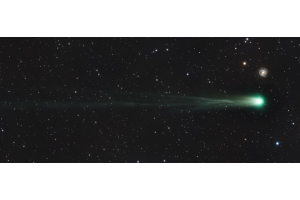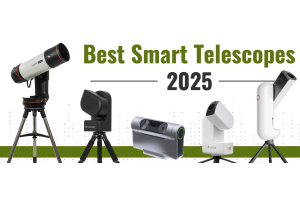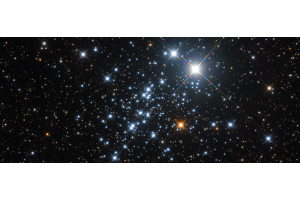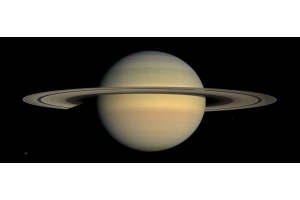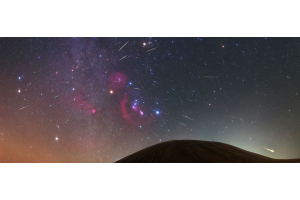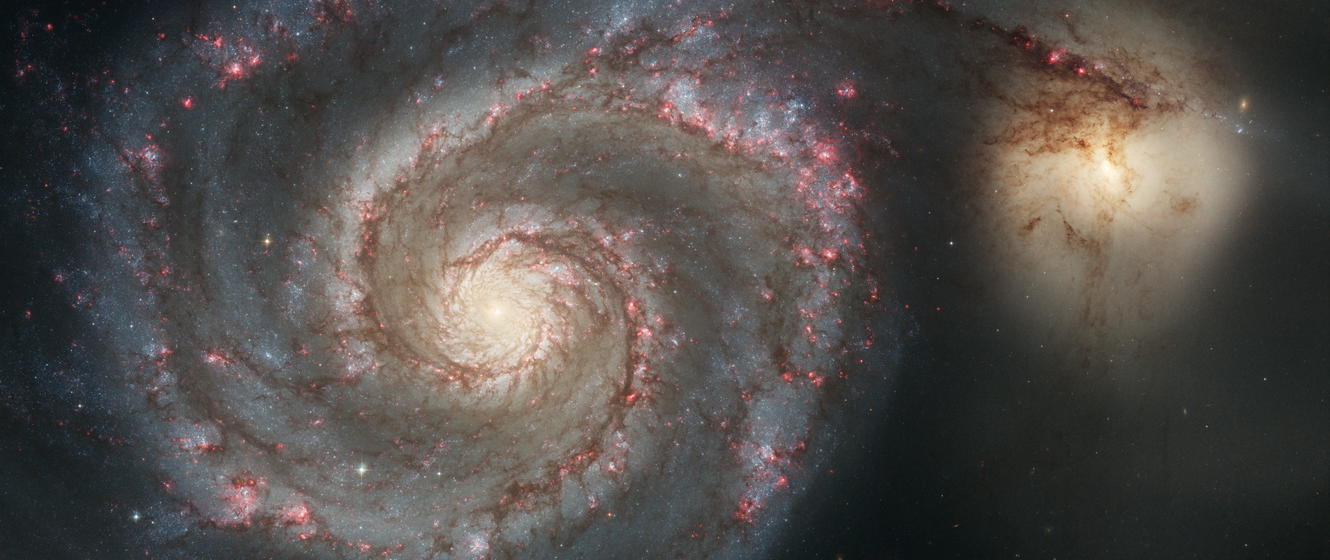
In this episode of What's in the Sky this Month, Teagan reviews some of the beautiful celestial objects you can see in the month of April!
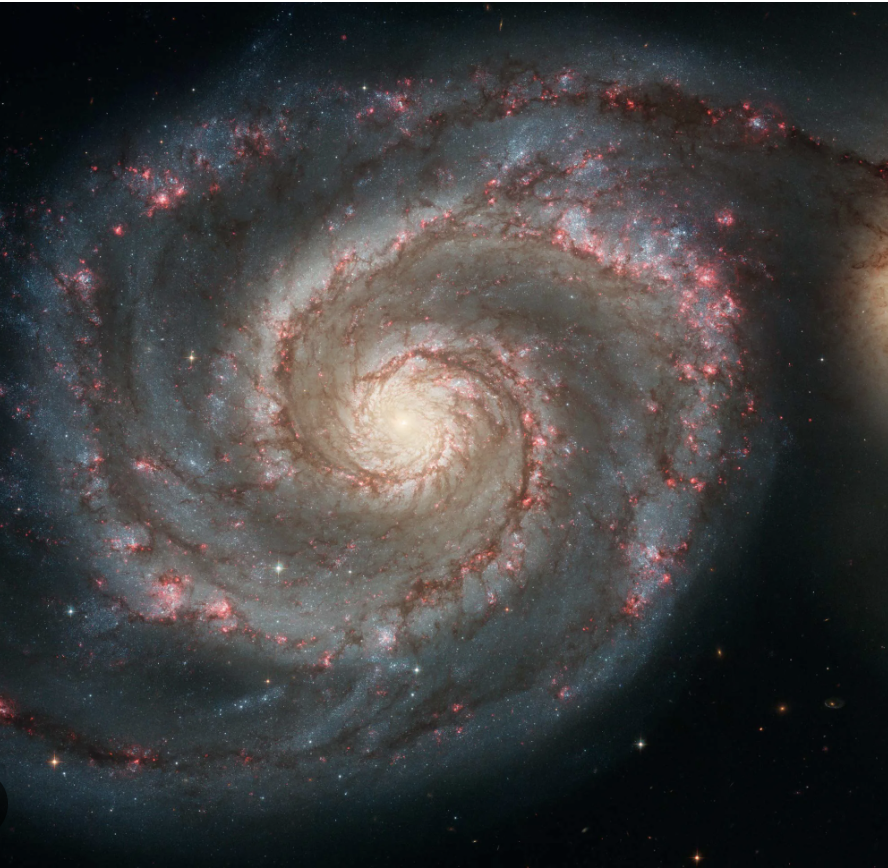
Image credit: NASA, ESA, S. Beckwith (STScI) and the Hubble
Heritage Team (STScI/AURA)
Messier 51 - The Whirlpool Galaxy
Spring is galaxy season, and one of the most popular targets for visual observers and astrophotographers alike is the Whirlpool Galaxy. It’s conveniently located about three and a half degrees from Alkaid, the star at the end of the handle of the Big Dipper, and forms a triangle with another star, 24 Canum Venaticorum. However, as with almost all galaxies, you’ll need dark skies and a telescope to get the most out of it.
Through a small scope, the galaxy appears as a faint patch, with some texture potentially being visible, while its tiny companion, NGC 5195, shows a starlike core. Larger telescopes (250mm, or 10 inches in aperture) are needed to clearly show its famous spiral arms, but even at higher magnifications the connecting bridge between the two may be difficult to spot.
OUR NEAREST NEIGHBORS
Neptune is too close to the Sun to be visible, and Uranus is too low in the evening twilight to make observations worthwhile. However, Jupiter remains telescopically observable for a short time after twilight for the first half of the month, with the crescent Moon close by on the 2nd and 30th. Mars is just four degrees from Pollux in Gemini, giving observers the opportunity to compare their colors. You’ll find them high in the southwest after sunset, with the first quarter Moon just above Mars on the 5th. Venus is low in the east at around 30 minutes before sunrise at the start of the month, but it’ll be visible from around an hour before sunrise by month’s end. Similarly, Mercury and Saturn appear close to one another and to the lower right of Venus at about 30 minutes before sunrise from around the 7th to the 14th. However, they’ll both be faint and close to the horizon, with Saturn appearing to the lower right of Venus and Mercury to the lower left. The trio are joined by the waning crescent Moon on the 24th and 25th. The Full Moon, known as the Pink Moon, occurs on the 12th, with New Moon on the 27th.
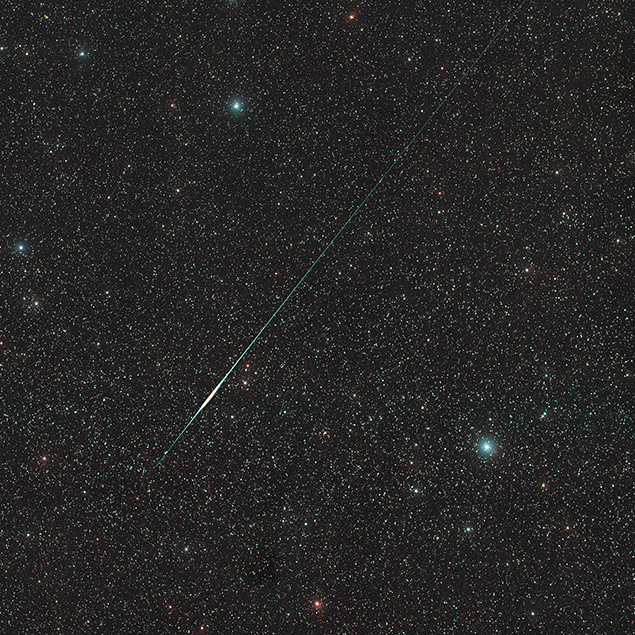
Image credit: Pawel Zgrzebnicki
Lyrid Meteor Shower
The Lyrids reach their maximum on the evening of the 21st but are best seen during the early hours of the 22nd. Fortunately, the Moon is a waning crescent this year, and its light won’t brighten the sky, allowing you to see up to 18 shooting stars every hour under ideal conditions.
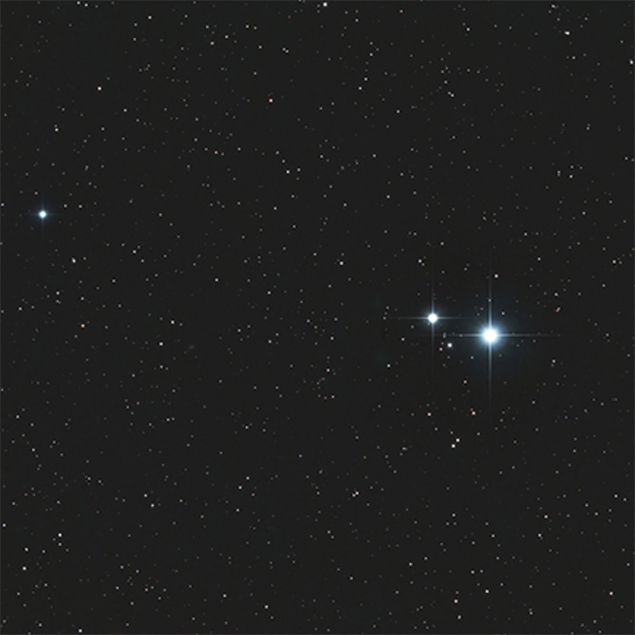
Image credit: Greg Parker via AstronomyNow.com
Mizar & Alcor (Zeta Ursae Majoris)
An outstanding double star for beginners, look carefully with the naked eye at Mizar, the middle star in the handle of the Big Dipper, and you’ll see a tiny star beside it. This is Alcor, and while the pair make a pretty sight for binoculars, almost any telescope will show Mizar itself to be double.
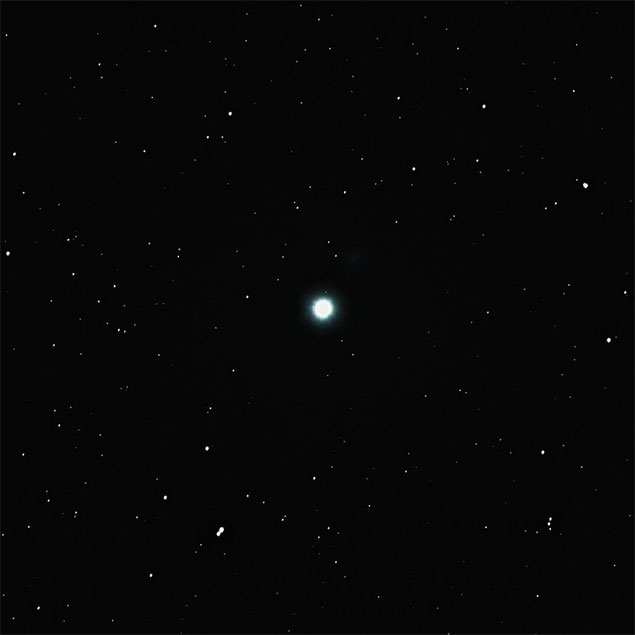
Image credit: Joe Matthews via AstroBin
Cor Caroli (Alpha Canum Venaticorum)
Like the Whirlpool Galaxy, Cor Caroli is located close to Alkaid in the Big Dipper, and like Mizar, it’s a relatively easy double for beginners. A low magnification of around 30x will show a brilliant white star with a fainter creamy-white companion.
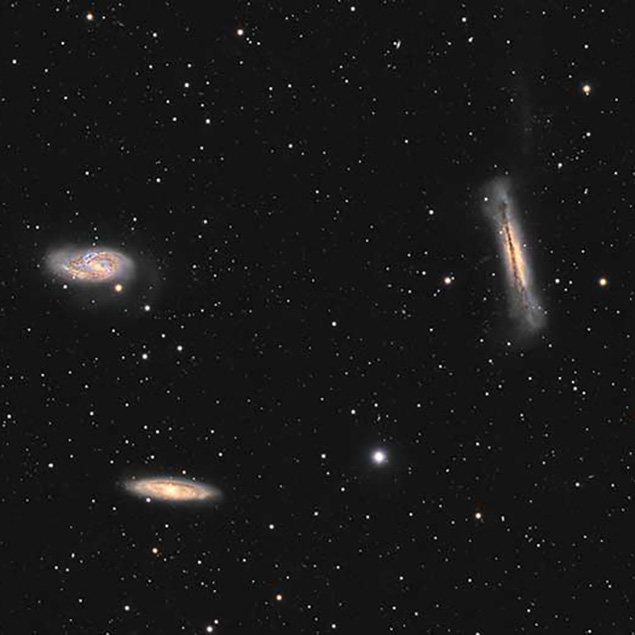
Image credit: Ron Brecher
M65, M66, and NGC 3628 - The Leo Triplet
The two brightest galaxies in this trio - M65 and M66 - are bright enough to be spotted with binoculars, but you’ll need a scope to see NGC 3628. A magnification of around 70x will show all three as elongated patches within the same field of view, but you’ll likely need a scope of 250mm in aperture to see any detail.
STELLAR CONCEPTS
Aperture: When it comes to telescopes, there’s one key feature that stands out from everything else: aperture. The aperture of a telescope is the diameter of the lens or mirror, and the bigger the aperture, the more light the telescope can gather. As a result, observers are able to identify fainter objects and see more detail than would be possible with a smaller aperture scope. The downside? Larger apertures can lack portability, and of course, they cost more!





